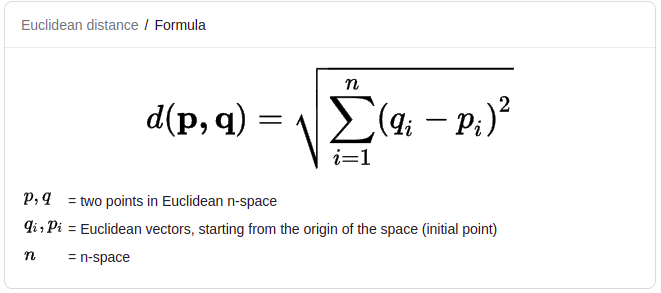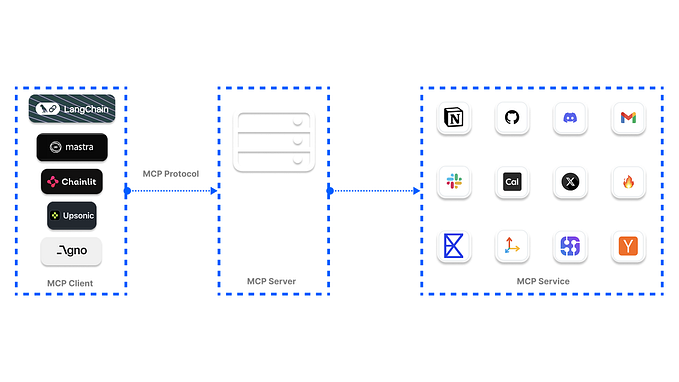Learning analytics and the application of Data Science in Education
Inviting data science practices in the classroom — how close are we to transform education?

Teachers, parents, and students’ eagerness to learn are critical contributors to educational success (Newman, 2000) but not always sufficiently connected.
Data science methods such as educational data mining and learning analytics can significantly enhance the communication between these contributors which helps build a thriving environment for students.
This paper outlines the current challenges in the education sector, discusses some of the data-driven opportunities that can help optimise the learning of students while considering the innovations’ implementation barriers.
Challenges driving innovation in education
Student engagement
Engagement refers “to the extent to which students identify with and value schooling outcomes, and participate in academic and non-academic school activities (…) Engagement is seen as a disposition towards learning, working with others and functioning in a social institution” (Willms, 2003)
Low engagement from students in the classroom can lead to issues which can be behavioral (suspensions) or result in poor academic achievement (Barghaus et al., 2017).
The engagement level of a student can be impacted by the fact that students within the same class are led through identical teaching methods to achieve the country’s education program regardless of their socio-economic background, parental support, or learning capabilities.
This is limiting the learning potential of a student which shows in the national/international benchmark in reading, writing and numeracy.
A performance comparison in reading, mathematics and science worldwide is available here: https://data.oecd.org/pisa/reading-performance-pisa.htm#indicator-chart
The suggestion is to include more personalisation in the teaching methods and adjust the content based on the students’ interests.
“Those who support personalisation of education call for a greater sensitivity to learners’ individual needs, for reasons of ethics as well as efficiency.” (“Introduction to Personalisation — OECD,” n.d.)
Teacher status and skillset
On the teachers’ and educators’ end, it is challenging to attend to individual needs and learning preferences.
They are limited by constraints such as time, tools, and classroom-sizes which were at 23.6 in Australia, OECD average of 21 in 2017 for primary education. (Stats.oecd.org, 2020).
Before being able to adjust their methods to different students, they first need to understand and evaluate individual preferences which are time-consuming.
It is also not incorrect to mention that there are little incentives for most teachers to renew their skillset throughout their career which is already offering limited options for growth and diversification.
“Teachers are generally employed as public servants, and in a number of countries this is associated with tenured employment once permanency is obtained. There may not be sufficient incentives for all teachers to continuously review their skills and improve their practice, especially where there are only limited mechanisms for teacher evaluation and accountability.” (OECD, 2005)
Finland for example, which has one of the best education systems, understands teachers play a critical role. They have made it a respected profession with high selectivity and allow teachers freedom in curriculum and assessment design, which engages them actively. (Sahlberg, 2010)
Parental Encouragement
Education is not limited to the classroom and it has been proven that “parental encouragement, parental expectations, and parental beliefs” had positive impacts on the child’s success at school. (Areepattamannil, 2010, p. 283–289)
Up until the end of secondary education, parents receive a quarterly report on their children’s performance but do not necessarily stay updated on their children’s progress in between quarters.
In addition to having both parents committed to working full-time, making it difficult to attend daytime functions, surveys also showed that there can be lack of comfort in being actively involved created by the parent’s own experience with the educational system or lack thereof. (Caplan, 2001)
Parents can also be genuinely unaware of how significant their impact could be and rely solely on the teachers’ expertise. A study by the OECD (PISA) in 2018 claims that “about 41% of students’ parents discussed their child’s progress with a teacher on their own initiative and 57% did so on the initiative of teachers, on average across OECD countries”. (Oecd.org, 2020)
DATA AS AN INNOVATION FACILITATOR
Real-time feedback and personalised learning
“Big data can provide a more intelligent and effective feedback-loop where students receive information in a short amount of time in response to their input” (Weber, 2016).
Personalisation via a range of data informed approaches can be used both to feedback to students, and to support teachers in developing their materials. For example, Hattie and Timperley (2007) identify formative feedback as an important way to support individual students in improving.
By using automated feedback tools, we can more easily provide immediate feedback to students, for example the Revision Assistant tool from Turnitin uses natural language processing trained on previously graded examples to provide automatic feedback to students, with evaluation indicating that it increases the number of revisions that students make, an important factor in improving their writing.
The developers at Carnegie Learning, which is a provider of math learning software, took it a step further, by starting to use digital assistants that collaborate with teachers in providing personalised learning in real-time during the class, and introduces the terms of “Ai Teacher Bots”.
The concept is that the bot would inform the teacher that a student is stuck on a specific problem and why, or if they are idle and address the difficulties in real-time. (WIRE, 2020)
Predictive analytics can also be useful in determining whether a student is likely to drop out and when by analysing historical data of previous students and identify patterns from behaviours. The University of Florida used this method in 2012 (Niemi, David, and Elena Gitin., 2012).
Their model analysed “various variables like student background, demographics, high school grades, the economic background to assess the dropout probability for the students.”
Teacher recruitment and development opportunities
Teachers assessment through feedback is one common approach to evaluating the teacher’s performance however it can be tedious to identify insights from the reviews. Once again, Natural Language Processing (NLP) facilitates this process as it allows to perform sentiment analysis on the unstructured text (reviews and comments, which is the identification and categorisation of feelings towards a topic, ie. Positive, Neutral, Negative, on both recorded and real-time data. (The Modern Way of Learning, 2019).
In order for experts to evaluate the performance of a teacher, the current method is for them to sit in a few lectures and provide a report of formative feedback to the teacher which is unscalable, costly, and not frequent enough for it to be impactful for the teacher. (Ahuja et al., 2019)
This is where EduSense can make a difference on a large scale. As its name suggests, it is a system combining computer vision and machine learning which captures audio and video to get a “sense” of what is happening in a classroom by recording the teacher and the students. It captures, for example, the participation level of students and how the educator is using the space.
More information on EduSense can be found here: https://www.cmu.edu/news/stories/archives/2019/november/edusense-fitbit-your-teaching-skills.html
Facilitating the involvement of parents
As previously mentioned, parents have time restrictions, can be reluctant to get involved in school activities which can let to them avoiding playing a role in their child’s education altogether. The idea is to make information accessible easily and facilitate communication.
This can be enabled via online platforms that connects parents to teachers which allows them to be regularly informed of the content learned, keep track of progress, strength, and weaknesses. (Williamson, 2017). These platforms can also allow for them to comment and start discussions with teachers and their children.
“Sharing student learning and performance data with families changes the conversation between families and schools. Data provide the content that engages families to understand where students are, (…) it gives parents a voice in the educational process and empowers them to partner with educators to promote their child’s academic growth.” (Weiss, Lopez, & Rosenberg, 2010)

Implementation barriers
The collection and use of significant and sensitive data come with its set of challenges.
Data collection and biases
For the analysis to be efficient, there is a need for consistency in collecting methods at a global level and standardisation of datasets.
Machine learning models used to identify behavioural patterns can include biases and exacerbate them. “Students may see labels as self-fulfilling prophecies and predictive analytics may prime educators to make prior judgments about students’ capabilities and character” (Alarcon et al., 2014).
To optimise the benefits, the data needs to be collected within the classroom in real-time which can be difficult to capture, unless the students are equipped with individual computers which increases digital divide, the inequalities in access to technologies.
Data privacy
The collection of more granular information about students and educational institutions is raising the question of privacy rights, which is especially sensitive when it comes to minors.
ClassDojo which collects behavioural data about minor students is quite controversial, “We argue that ClassDojo’s datafying system of school discipline intensifies and normalises the surveillance of students. (Manolev, Sullivan, and Slee 2018)
There are risks that it can cause harm once the student becomes an adult and the data collected during their childhood is used by potential employers.
In 2014, Google admitted that it mines student data from its Google Apps for Education for targeted advertising purposes. (Carmel, 2020). Another data slip happened with Schoolzilla which exposed the scores of over a million students (“Schoolzilla ‘File Configuration Error’ Exposes Data for More Than 1.3M Students, 2017)
“In a 2012 survey, 93 percent of parents with children in the US school system (grades 1 through 12) said they were either “somewhat uncomfortable” or “very uncomfortable” with advertisers tracking their children’s Internet use in school.” (Protecting student data in a digital world, 2020)
Embracing change
There may be some reluctance to change from all parties, students, parents, and teachers regarding the use of new technologies and moving away from traditional learning methods.
Innovations alone will not be able to massively impact education if they are not adopted by all parties involved at a large scale.
Political barriers
Reducing class sizes, evaluating teachers with a new model, designing new courses are expensive to implement.
“The drive to reduce class sizes in Australian schools was a costly mistake that drove up the cost of schooling by over 25 percent to $50 billion a year and failed to improve education.” (Australian Financial Review, 2020)
On the other hand, Hattie and Timperley (2007) establish that formative feedback could potentially increase the average student growth by 50% in one school year. Black and Wiliam (2010) have assessed that it is also more beneficial to students with more difficulties and it allows to close gaps of knowledge and performance within classrooms.
Impacts
The collection and analysis of data help educators and students to make changes in real-time and build platforms that can connect students, parents, and educators.
The innovations listed that stem from the application of data science practices such as, increasing student engagement, a better assessment of teacher’s skills and involving parents through communication platforms can help prevent drop out, increase passing rates, attract more talented students which creates a virtuous circle.
Students can develop to their full capacity, become better employees, self-learners, innovators, and beaming individuals by investing time and interest in their education. The major impact here is to develop a better society.
”The purpose of education has always been to everyone, in essence, the same — to give the young the things they need in order to develop in an orderly, sequential way into members of society.” (Dewey, 1934)
The below illustration from the Data Quality Campaign summarises the concepts mentioned in this paper and the impact of the student’s environment nicely.

References
Ahuja, K., Kim, D., Xhakaj, F., Varga, V., Xie, A., Zhang, S., Townsend, J.E., Harrison, C., Ogan, A., Agarwal, Y., 2019. EduSense: Practical Classroom Sensing at Scale. Proc. ACM Interact. Mob. Wearable Ubiquitous Technol. 3, 71:1–71:26. https://doi.org/10.1145/3351229
Alarcon, A., Zeide, E., Rosenblat, A., Wikelius, K. Boyd, D., Gangadharan, S. P., & Yu, C. 2014, Data & civil rights: Education primer.
Areepattamannil, S., 2010. Parenting Practices, Parenting Style, and Children’s School Achievement. Psychol Stud 55, 283–289. https://doi.org/10.1007/s12646-010-0043-0
Attracting, Developing and Retaining Effective Teachers — Final Report: Teachers Matter — OECD [WWW Document], n.d. URL https://www.oecd.org/education/school/attractingdevelopingandretainingeffectiveteachers-finalreportteachersmatter.htm (Viewed 15 June 2020).
Australian Financial Review, 2020. Reducing Class Sizes Was The Costliest Mistake Ever Made In Australian Schools. [online] Available at: <https://www.afr.com/work-and-careers/management/reducing-class-sizes-was-the-costliest-mistake-ever-made-in-australian-schools-20160601-gp93y1> [Viewed 9 April 2020].
Barghaus, K., Fantuzzo, J., LeBoeuf, W., Henderson, C., Li, F., McDermott, P., 2017. Problems in Classroom Engagement: Validation of an Assessment for District-Wide Use in the Early Primary Grades. Early Education and Development 28, 154–166. https://doi.org/10.1080/10409289.2016.1197012
Caplan, J., 2001. Strengthening the Connection between School and Home. Essentials for Principals[TM].
Carmel, Y. 2020, Regulating “Big Data Education” In Europe: Lessons Learned From The US. [online] Internet Policy Review. Available at: <https://policyreview.info/articles/analysis/regulating-big-data-education-europe-lessons-learned-us> [Viewed 9 April 2020].
Data Science in Education — The Modern Way of Learning [Case Study] [online], 2019. . DataFlair. Available at <https://data-flair.training/blogs/data-science-in-education/> [Viewed 15 June 2020]
Dewey, J. 1934, Individual Psychology and Education
Education.nsw.gov.au. 2020, Collecting Internal School Data. [online] Available at: <https://education.nsw.gov.au/teaching-and-learning/school-excellence-and-accountability/sef-evidence-guide/guidelines-for-using-data/collecting-internal-school-data> [Viewed 9 April 2020].
Education-inequalities.org. 2020, World Inequality Database On Education [online] Available at: <https://www.education-inequalities.org/> [Viewed 9 April 2020].
Foshay, A., 1991, The Curriculum Matrix: Transcendence and Mathematics. Journal of Curriculum and Supervision
Gardner, H., 1983, Frames Of Mind. New York: Basic Books.
Hattie, J., & Timperley, H. 2007, The power of feedback. Review of educational research
Henderson, C., Turpen, C., Dancy, M. and Chapman, T., 2014, Assessment of teaching effectiveness: Lack of alignment between instructors, institutions, and research recommendations. Physical Review Special Topics-Physics Education Research, 10(1), p.010106.
Introduction to Personalisation — OECD [WWW Document], n.d. URL https://www.oecd.org/site/schoolingfortomorrowknowledgebase/themes/demand/introductiontopersonalisation.htm (accessed 7.29.20).
Manolev, J., Sullivan, A., Slee, R., 2018. The datafication of discipline: ClassDojo, surveillance and a performative classroom culture. Learning, Media and Technology.
McKinney, P. 2017, Innovation In The Classroom: Why Education Needs To Be More Innovative [online] Phil McKinney — Innovation Mentor and Coach. Available at: <https://philmckinney.com/innovation-classroom-education-needs-innovative/> [Viewed 30 March 2020].
McKinsey & Company. 2020, Protecting Student Data In A Digital World. [online] Available at: <https://www.mckinsey.com/industries/public-sector/our-insights/protecting-student-data-in-a-digital-world> [Viewed 9 April 2020].
Mo Y, Singh K. 2015, Parents’ Relationships and Involvement: Effects on Students’ School Engagement and Performance
Newman, R., 2000, Social Influences on the Development of Children’s Adaptive Help-Seeking: The Role of Parents, Teachers, and Peers. Developmental Review, 20(3), pp.350–404.
Niemi, D., Gitin, E., 2012. USING BIG DATA TO PREDICT STUDENT DROPOUTS: TECHNOLOGY AFFORDANCES FOR RESEARCH 4.
Oecd.org. 2020, PISA [online] Available at: <https://www.oecd.org/pisa/PISA%202018%20Insights%20and%20Interpretations%20FINAL%20PDF.pdf> [Viewed 9 April 2020].
Sahlberg, P. 2010, The Secret To Finland’s Success: Educating Teachers. Research Brief.
Schoolzilla ‘File Configuration Error’ Exposes Data for More Than 1.3M Students, Staff — EdSurge News, 2017. EdSurge [online]. Available at: https://www.edsurge.com/news/2017-04-20-schoolzilla-file-configuration-error-exposes-data-for-more-than-1-3m-students-staff [viewed 15 June 2020]
Stats.oecd.org. 2020, Average Class Size. [online] Available at: <https://stats.oecd.org/Index.aspx?DataSetCode=EDU_CLASS> [Viewed 31 March 2020].
Weber, A. 2016, The Big Student Big Data Grab. International Journal of Information and Education Technology.
Weiss, H.B, Lopez, M. E. & Rosenberg, H. 2010, Beyond random acts: Family, school and community engagement as an integral part of education reform. Paper prepared for the National Policy Forum for Family, School, and Community Engagement.
Williamson, B. 2017, Big Data In Education. Los Angeles [etc.]: SAGE Publications.
Willms, J.D., 2003. A SENSE OF BELONGING AND PARTICIPATION 84.
WIRE, B. 2020, Carnegie Learning Wins 3Rd AI Education Award This Year. [online] Businesswire.com. Available at: <https://www.businesswire.com/news/home/20190618005159/en/Carnegie-Learning-Wins-3rd-AI-Education-Award> [Viewed 9 April 2020].








